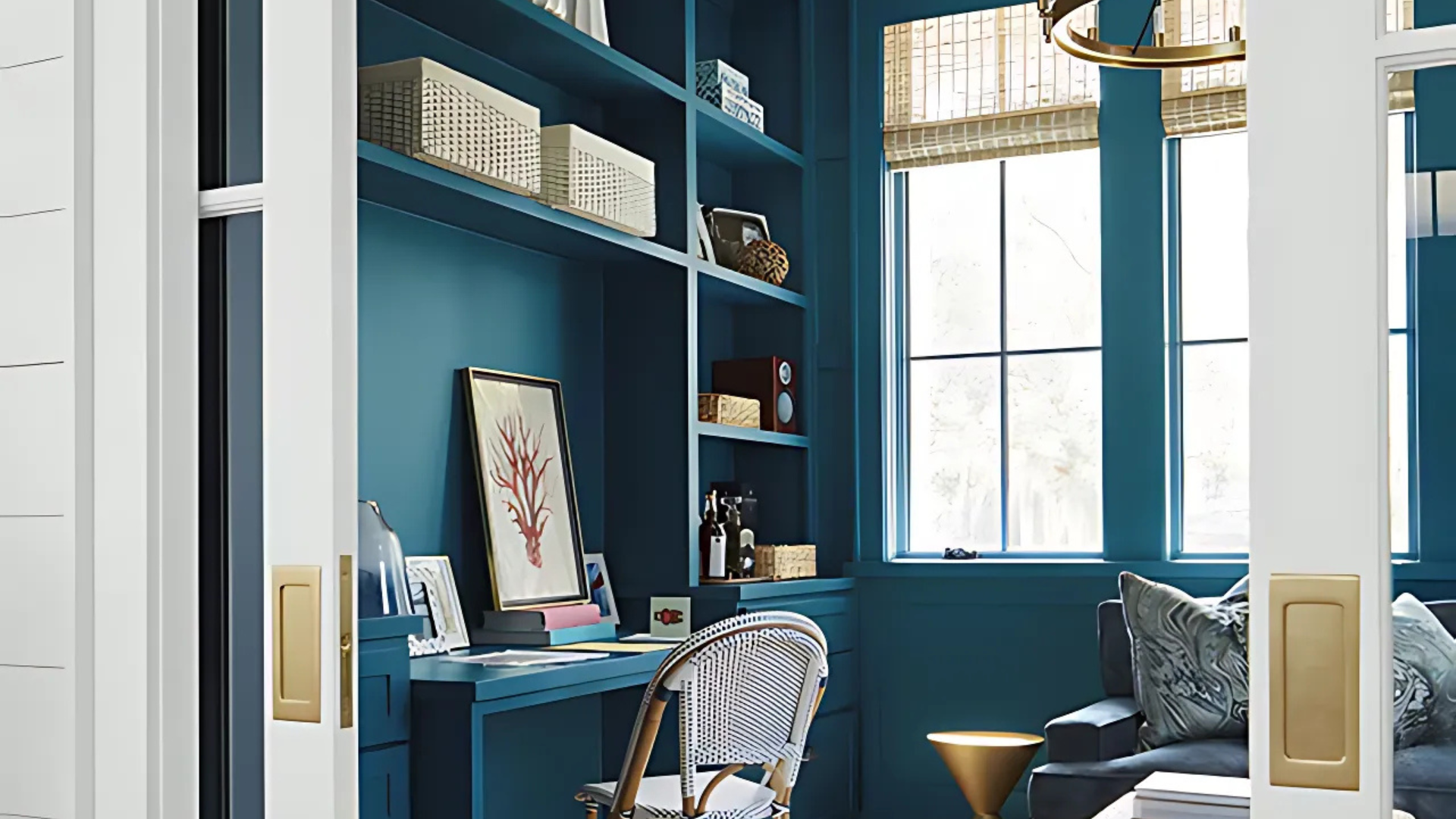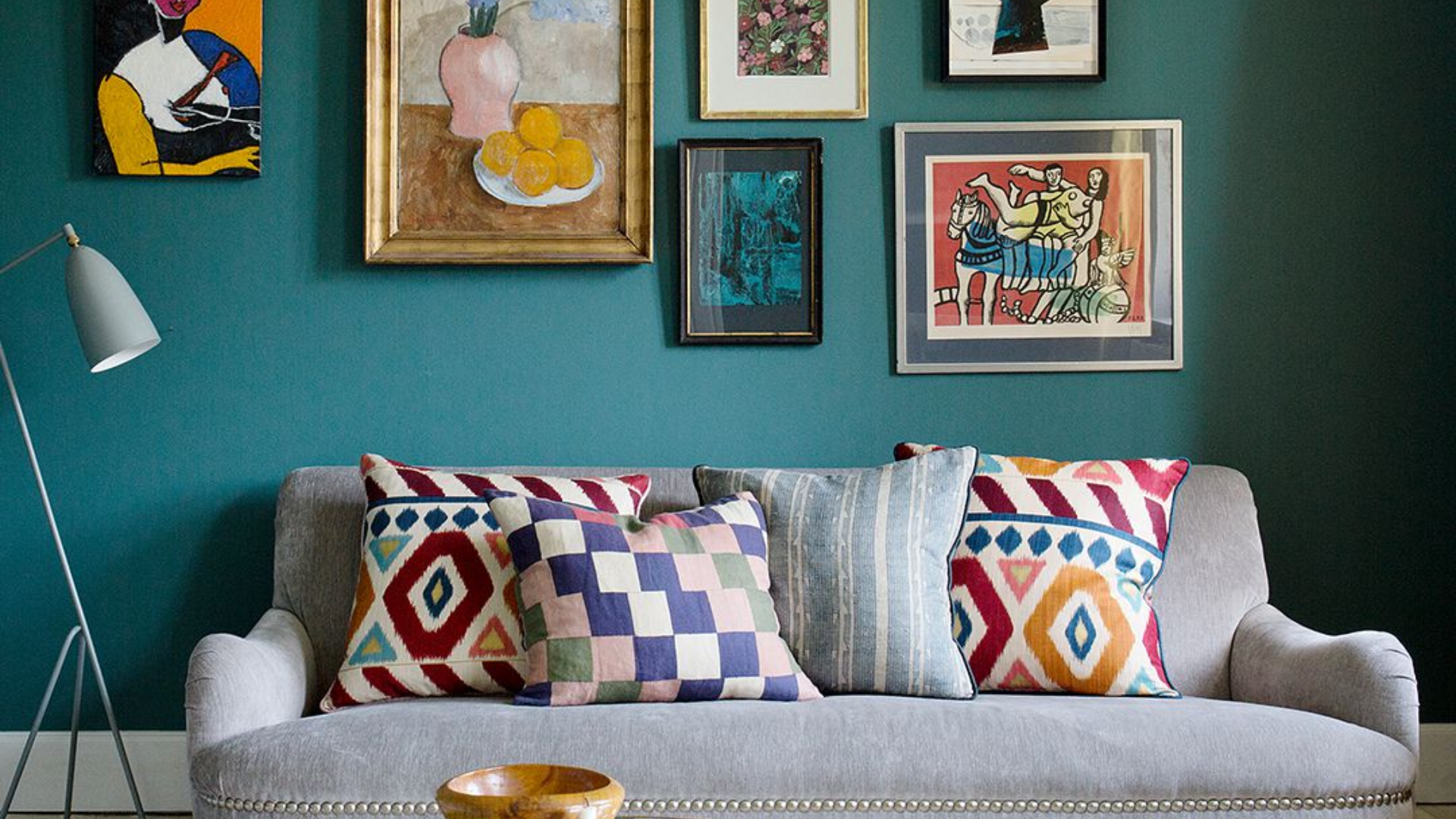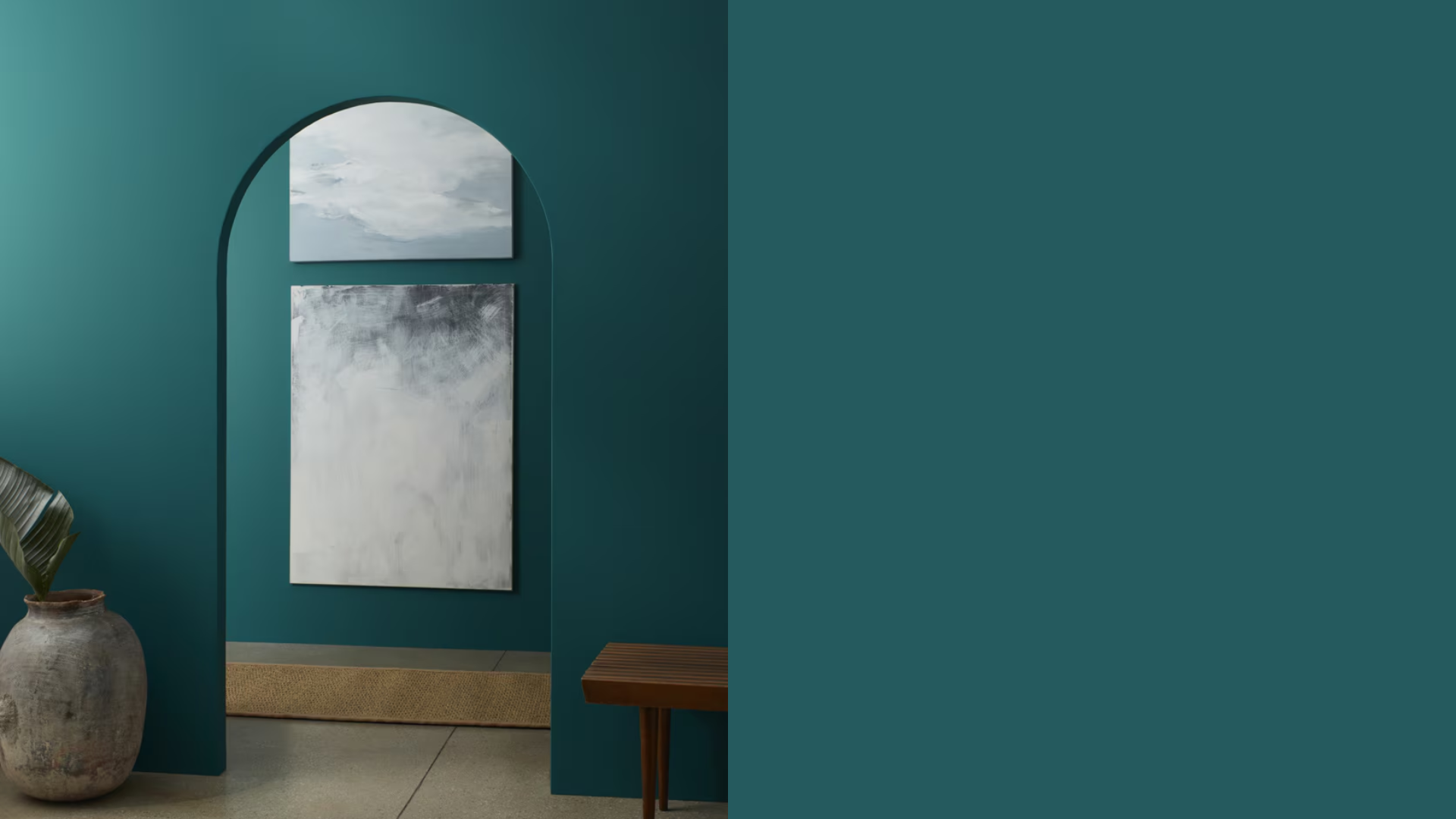Dark teal wall paint has a way of grabbing your attention. It feels deep and bold without being too loud. This color blends rich blue and green tones to create a strong look that works well in many homes.
In this blog, I’ll discuss why dark teal is a smart choice for walls. You’ll learn what makes this color stand out, how it affects a room’s feel, and where it works best.
I’ll also show you paint pairings, flooring ideas, and how to match them with other items in your space.
If you’re considering a deeper paint color, dark teal is worth considering. It can add a lot of feeling to a room without being too bright or too dark. Keep reading to find out how you can make it work in your own space.
Why Dark Teal Wall Paint (2053-20) Is the Perfect Choice for Your Space?

Dark teal is becoming a popular wall color, and it’s easy to see why. It brings a strong look to any room but still feels warm and calm. This color stands out without being too much, making it a smart choice for many homes.
Here’s why more people are choosing dark teal wall paint:
- It gives a bold look that still feels relaxing.
- The mix of blue and green tones adds depth and balance.
- It works well in small rooms and open spaces.
- It fits both modern and traditional styles.
- You can pair it with light or dark furniture for different effects.
- It looks rich under both natural and indoor lighting.
Dark teal offers just the right mix of color and calm. If you want a shade that feels fresh but still cozy, this might be the one for you.
The Psychology of Dark Teal: How It Affects Your Mood
Dark teal can change the mood of a room in a gentle but clear way. The blue tones in it bring a feeling of peace. They remind people of calm skies and deep water, which can help lower stress.
The green in dark teal makes you feel grounded. It gives off the feeling of being close to nature, like sitting in a quiet forest. This adds balance and helps make the space feel steady and secure.
When you mix blue and green in a darker shade, you get something strong yet calming. That’s why dark teal works well in bedrooms, living rooms, and even offices. It helps your mind slow down and focus.
This color makes a room feel restful without losing its depth, which is part of what makes it stand out as a wall color.
The Rich Undertones of Dark Teal
Dark teal paint isn’t just one flat color—it has layers. Some shades lean more toward blue, giving a cool and crisp look. Others pull in more green, adding a warmer and softer feel.
You might also notice hints of other colors in dark teal. Gray undertones can make a space feel calmer and muted, while navy touches can deepen the tone, giving it a stronger look on the wall.
Light changes everything with this color. In a bright room with ample natural light, dark teal may appear softer and slightly lighter. In rooms with low or warm lighting, the color looks deeper and bolder.
Benjamin Moore’s Dark Teal (2053-20) has an LRV of 10.12. This means it reflects a small amount of light, allowing the color to appear rich and deep on the walls.
In low-light rooms, consider balancing the space with light-colored flooring, trim, or furniture to prevent it from feeling too dark.
These small shifts make dark teal feel rich and full. It’s helpful to test it on your wall first so you can see how it reacts in your space.
Where Is Dark Teal Wall Paint Best Used in an Interior?

Dark teal is one of those colors that works in almost any space. It’s bold but not loud, rich but not too dark.
This color adds depth to your walls and creates a balanced, cozy feel. Whether you want something calm or dramatic, dark teal lets you control the vibe of your room with ease.
It works really well in bedrooms, where the deep tone makes the space feel restful and private. In the living room, dark teal adds warmth and makes the room feel full and stylish.
I’ve used it in a home office before, and it helped me focus while making the space look sharp and put-together. It also looks great in dining rooms, adding a mix of comfort and class.
You can use dark teal as a single accent wall or cover all four walls for more impact. I like using it in open-concept homes to separate spaces without needing physical dividers.
No matter how you use it, dark teal always adds character and charm.
What Kind of Floors Would Look Best with Dark Teal Wall Paint?
Flooring plays a big role in how dark teal walls look and feel. The right floor can either soften the space or add more contrast. Picking the right mix helps your room feel balanced and pulled together.
Here are some good flooring options to pair with dark teal wall paint:
- Light wood floors: Add brightness and keep the room from feeling too heavy.
- Medium wood tones: Bring in warmth and help the teal stand out without clashing.
- Dark hardwood floors: Create a bold, moody space with rich tones throughout.
- White or gray tile: This offers a clean, cool feel that pairs well with the depth.
- Soft carpet in beige or gray: It keeps things cozy and works well in bedrooms or offices.
To keep the room balanced, think about using rugs, furniture, or fabrics that connect the floor and wall colors. This helps tie the whole space together in a simple, natural way.
How to Incorporate Dark Teal Wall Paint Into Your Home Decor

Dark teal walls can set the tone for your whole space. Once the paint is on, the next step is making sure everything else in the room works with it. Picking the right items can help the color feel strong but not too heavy.
Gold and brass items bring out the warmth in dark teal. You can use them in light fixtures, mirror frames, or small accents. Wood tones, both light and dark, also pair well and help keep the room feeling balanced.
White works great, too. White trim, pillows, or curtains can help break up the dark color and make the room feel lighter. You can also use soft gray or cream for a gentle touch.
Think about texture to pull the space together. Add soft throws, woven rugs, or canvas art. These simple touches can add comfort and help the space feel more finished without the need to add more color.
Dark Teal vs. Other Bold Wall Colors
Dark teal is one of several popular deep paint colors. While others may be cooler or more plain, dark teal mixes color and comfort. Let’s look at how it compares to navy, forest green, and charcoal in a simple way.
| Color | Look and Feel | Where It Works Best | Key Notes |
|---|---|---|---|
| Dark Teal | Rich, calm, and full | Bedrooms, living rooms, and offices | A mix of blue and green adds balance |
| Navy | Strong, cool, and serious | Formal dining rooms, offices | Leans more blue, can feel cold |
| Forest Green | Deep, earthy, and grounded | Libraries, dens, cozy corners | Can feel heavy without bright lighting |
| Charcoal | Dark, plain, and modern | Modern spaces, bathrooms, hallways | Feels neutral but less colorful |
Each color has its place, but dark teal brings a blend that feels calm and rich at the same time. If you want something colorful without being too bright, dark teal is a smart option to think about.
Conclusion
Dark teal wall paint brings strength and depth to any room. It gives your walls a bold look without feeling harsh. With its rich color mix, it creates a calm mood that still feels full of life.
We’ve looked at how dark teal works in different spaces, how it changes with light, and what colors and floors go well with it. You’ve also seen how this shade can fit into home décor with ease.
If you want something that makes a strong impact, dark teal is a solid pick. It works in bedrooms, living rooms, and even offices. I’ve seen it shine on both a single accent wall and across all four.
To tie the look together, use warm wood, light fabrics, or soft gold pieces. These small choices can help balance the dark walls and give the room a finished look.

